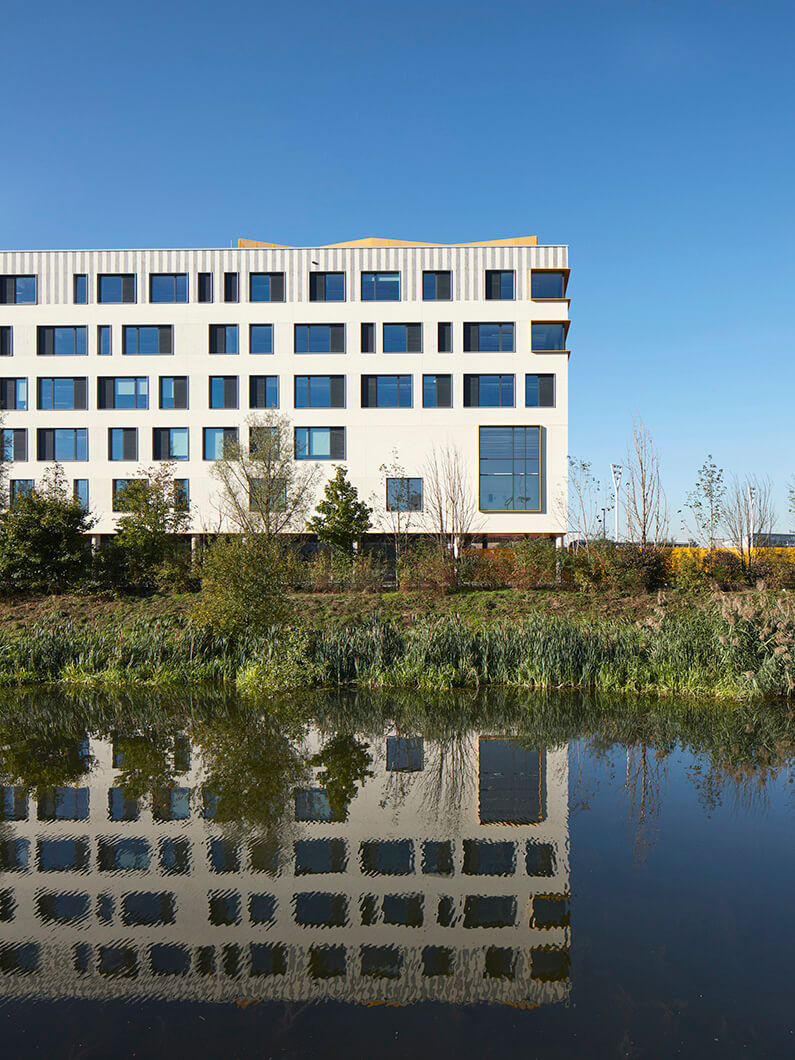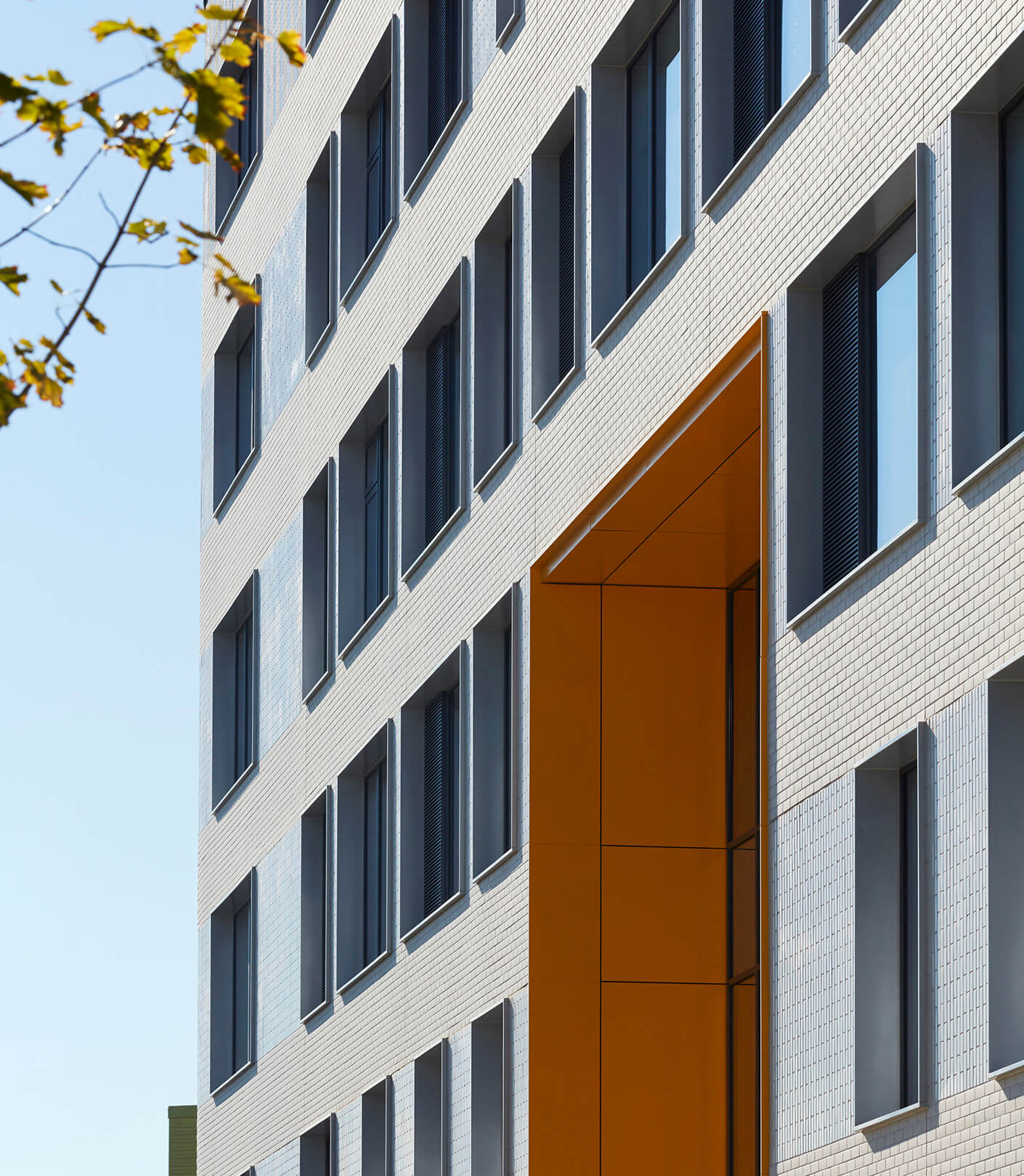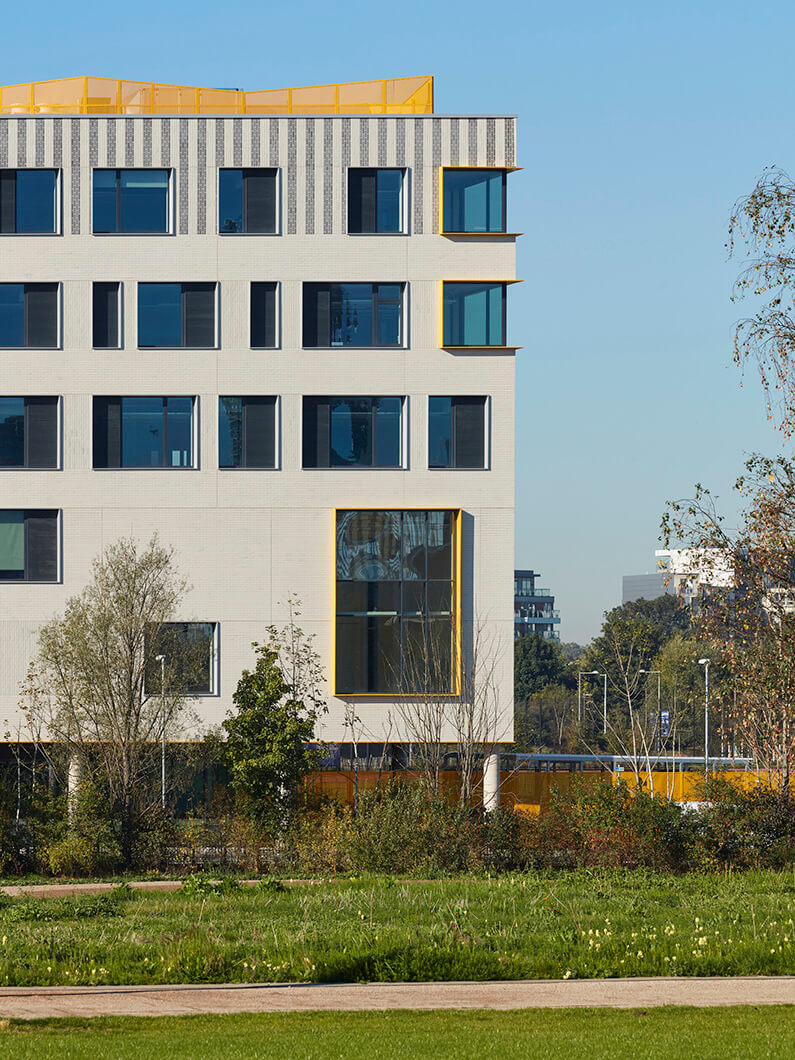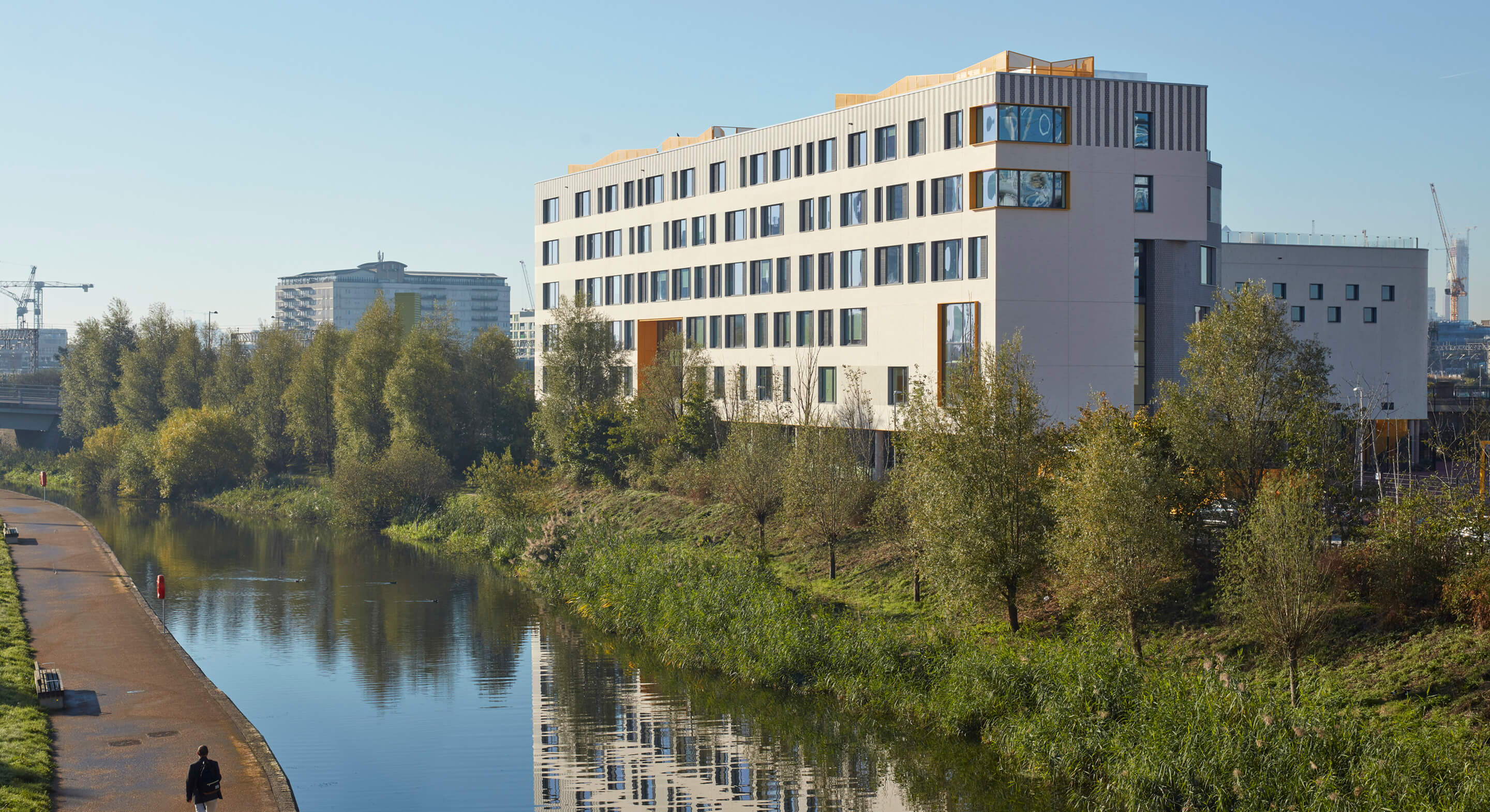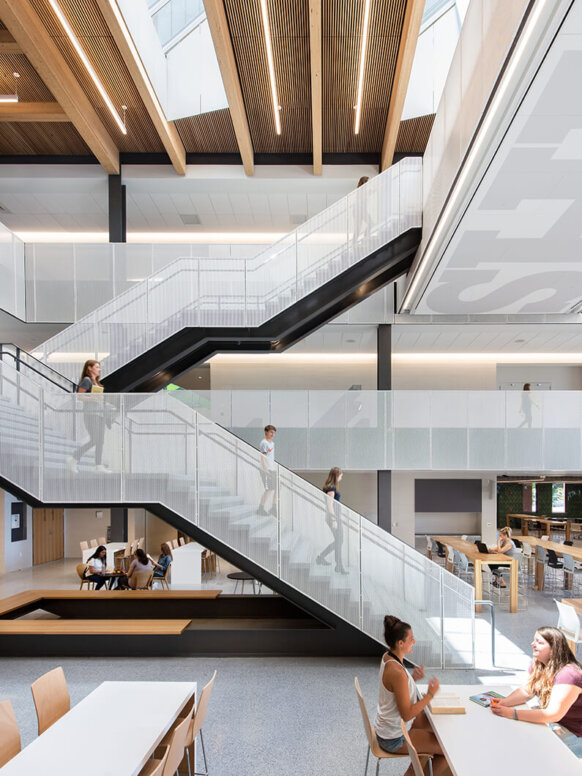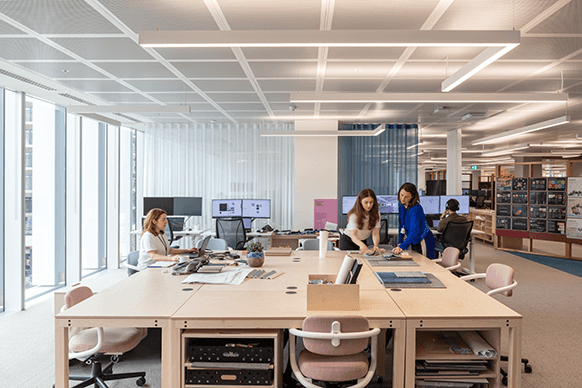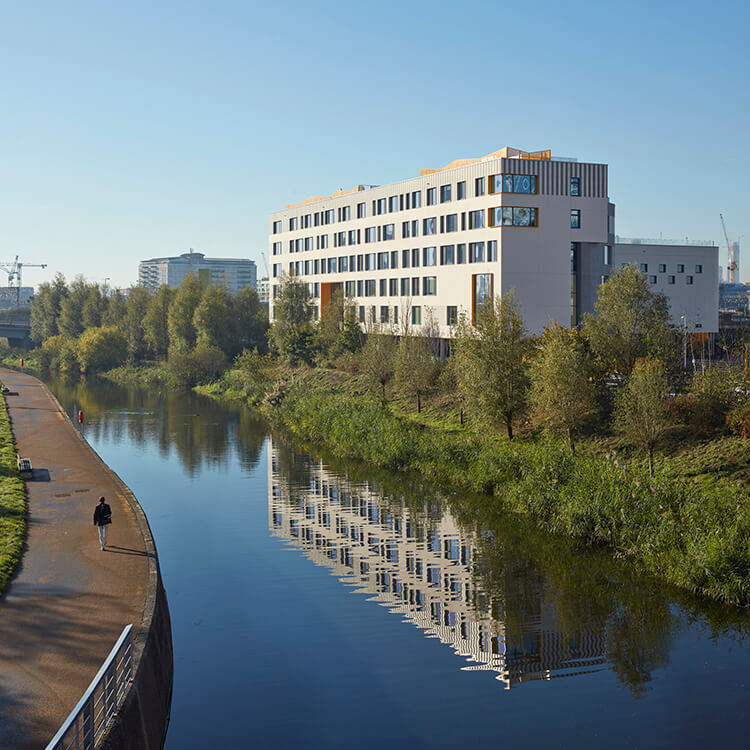
Bobby Moore Academy – Secondary School
The Bobby Moore Academy comprises new Primary and Secondary Schools split over two sites in the heart of the Queen Elizabeth Olympic Park in East London and includes shared use of a Multi-Use Games Area and Pavilion.
The new 6FE Secondary School, for 1,140 pupils, is built on one of the smallest secondary school sites in London, and provides much-needed education and community facilities to support the growing local neighbourhood. The school is a new exemplar of high-rise school design; comprising 9,240-square-metres of diverse learning and social spaces across six stories, woven together through vertical and horizontal connections.
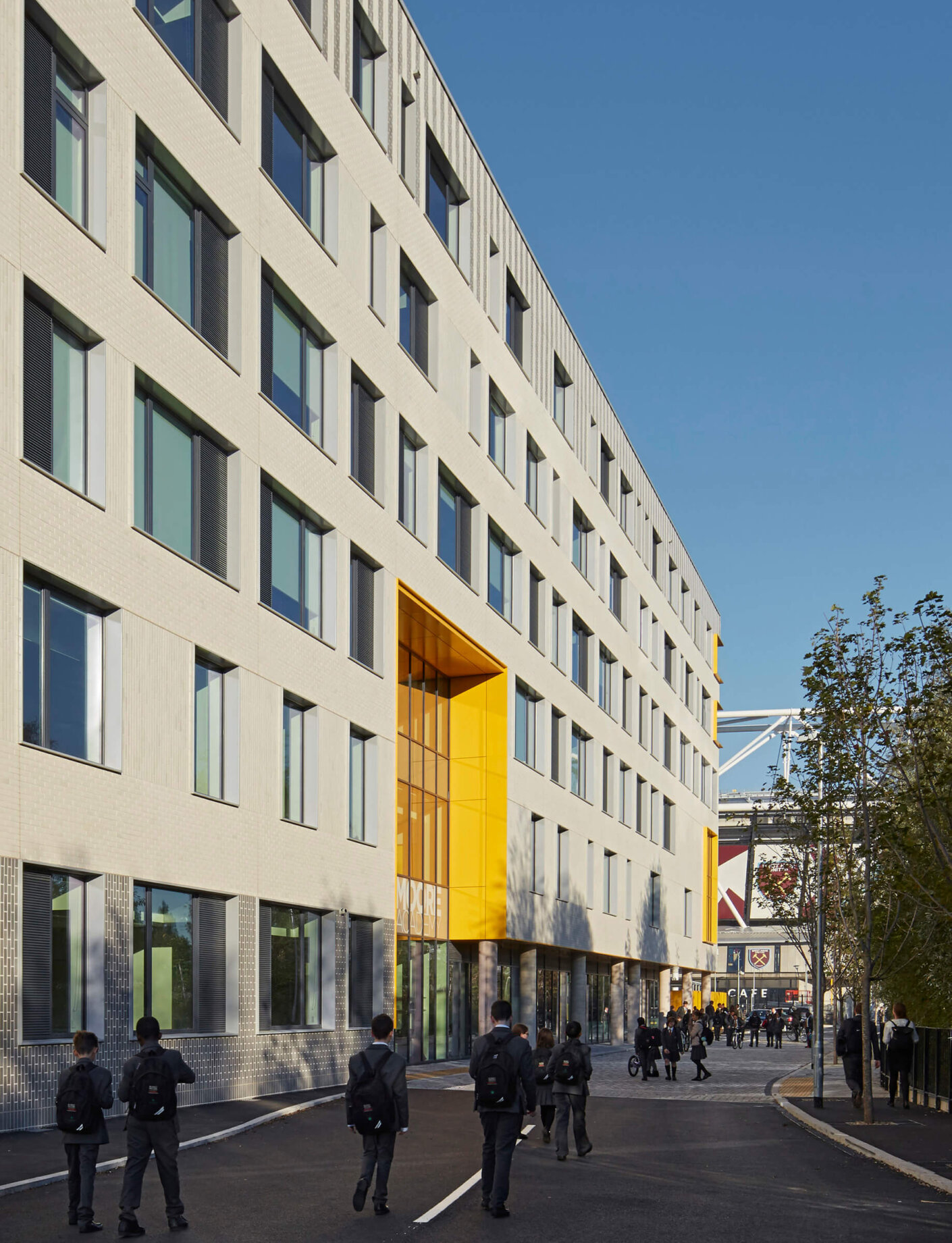
The building presents a strong architectural presence to hold its own against the dominant Olympic structures such as the Stadium, Orbit and Acquatics Centre. Its articulated form presents a bold civic presence to the Park, fronting a new public space overlooking the Mill City River.
Architecturally, it has a kinship with its smaller sibling, the Bobby Moore Academy Primary School, located on the other side of the Olympic Park. The crisply detailed palette of two-tone brick slips in a woven pattern of glazed and matt finishes. The deep, aluminium window is punctuated with bright yellow accents, and the carefully articulated massing creates a distinctive identity for the schools.
The secondary school is carefully positioned along the site’s northern boundary to maximise south-facing external play space. The main large spaces—assembly hall and sports hall—are raised to the first floor providing outdoor covered social space at ground level. A series of roof terraces step up the south elevation to provide additional external social space, commanding distant views over London and Canary Wharf.
The building was designed in extensive consultation with the David Ross Education Trust and the London Legacy Development Corporation, with complex educational and community needs. It is organised as a truly inclusive facility to be used during evenings, weekends and holidays by the wider public. Community-accessible facilities—dining, gathering, assembly hall, music and IT teaching, and sports facilities, are located at ground and first floor, with inclusive changing facilities at both levels, with the school’s teaching spaces on the upper levels. An extra-large lift accommodates parasports teams using the sports hall.
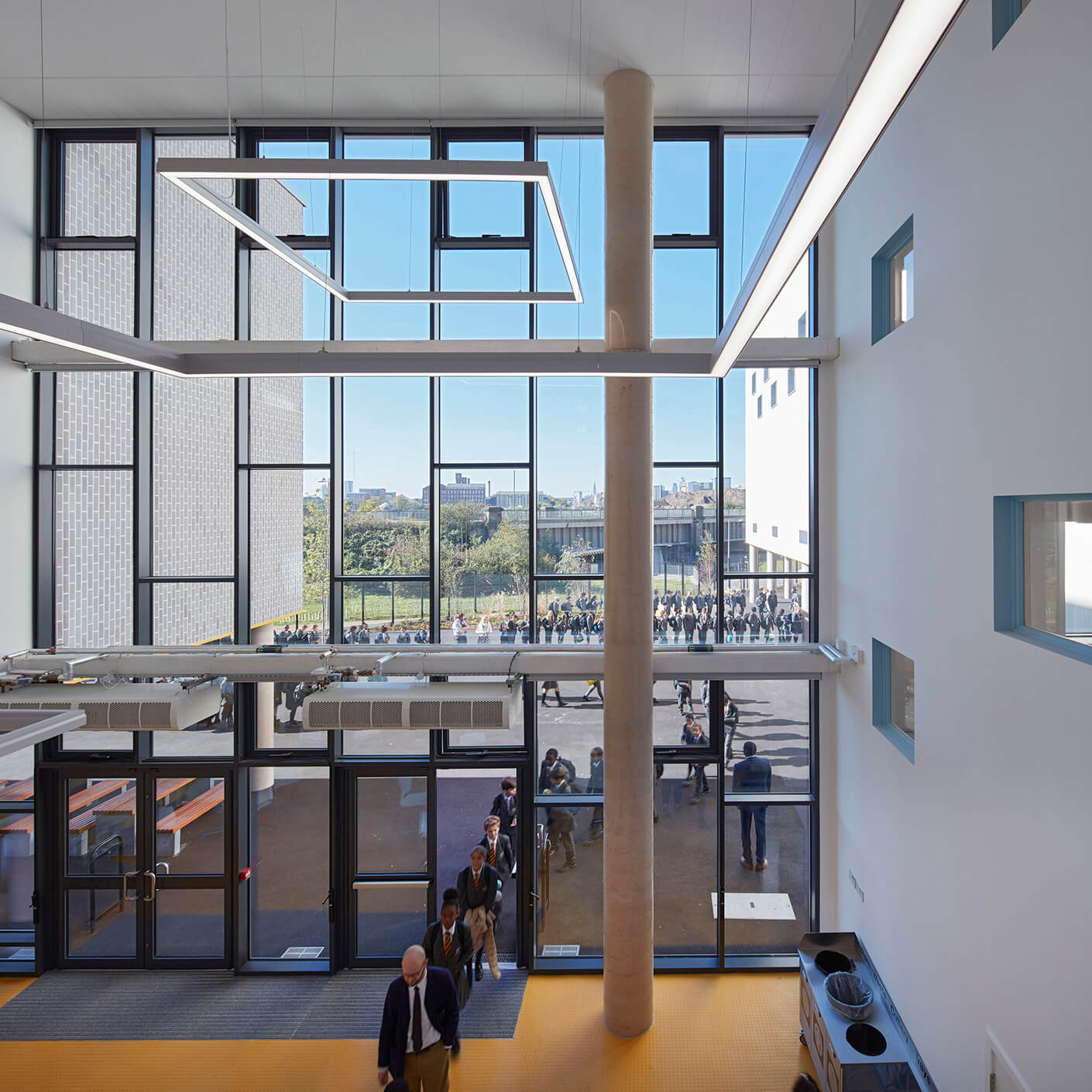
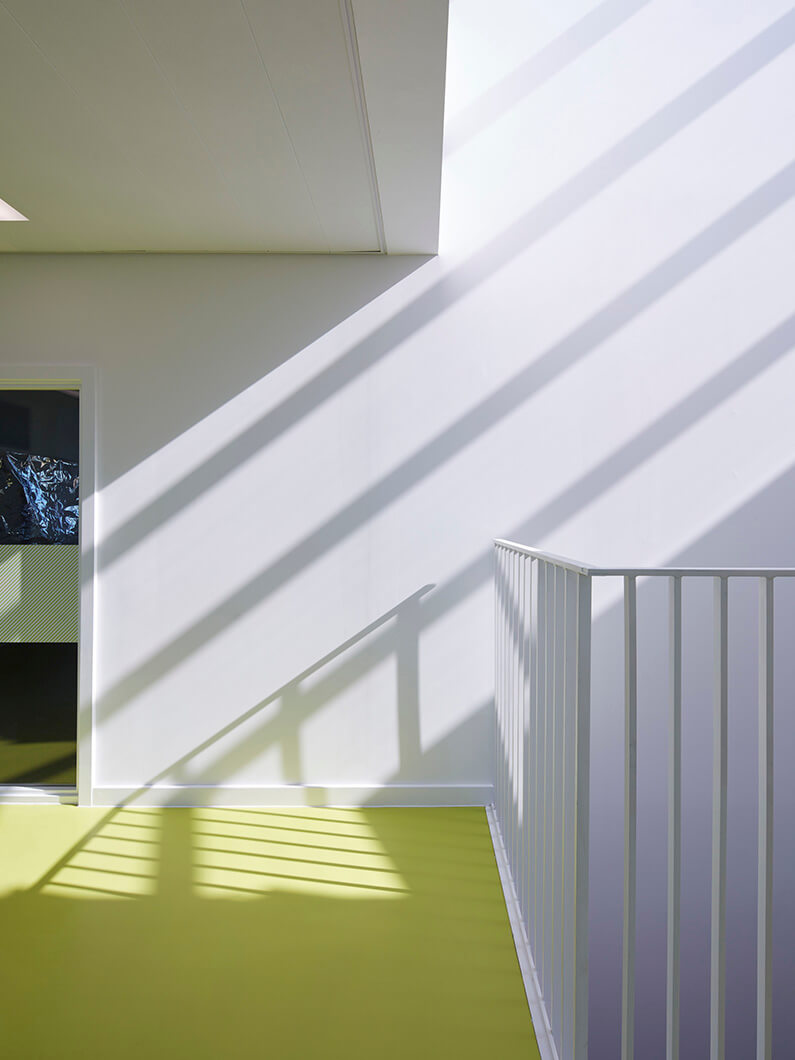
Packed into its compact form is a school of generous proportions, incorporating a web of large and small spaces, visually and physically connected through voids, screens and walkways. A central triple height atrium rises up through the centre of the building, forming the heart and focus of the school, and providing orientation along the corridor’s length. Above this sits a double height library, with a roof terrace above. A triple height sports hall and double height assembly hall and drama studio are inserted as distinctive volumes at first floor, while a double height dance studio bookends the building at one end. Windows and screens maximise transparency and views through and into these spaces.
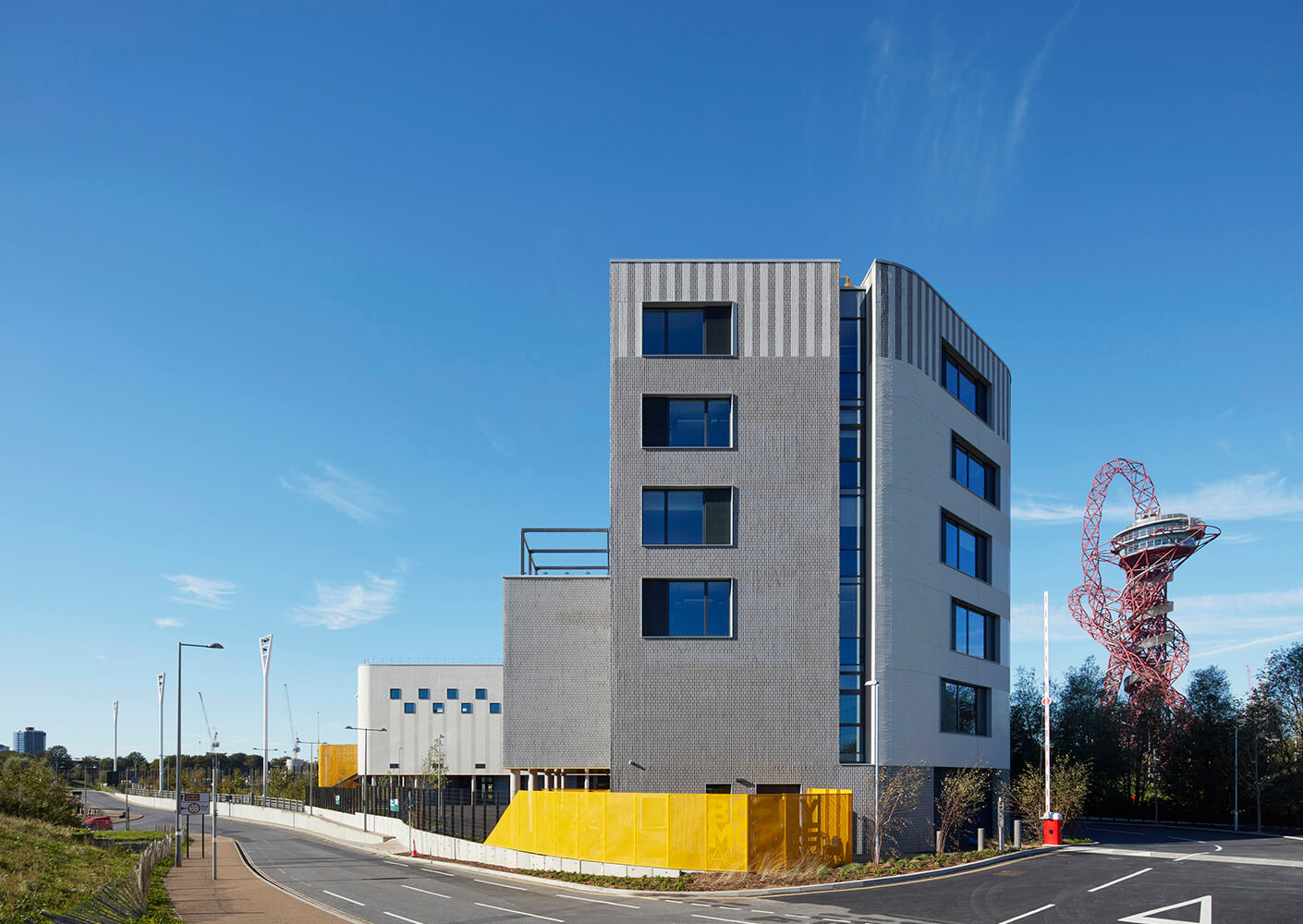
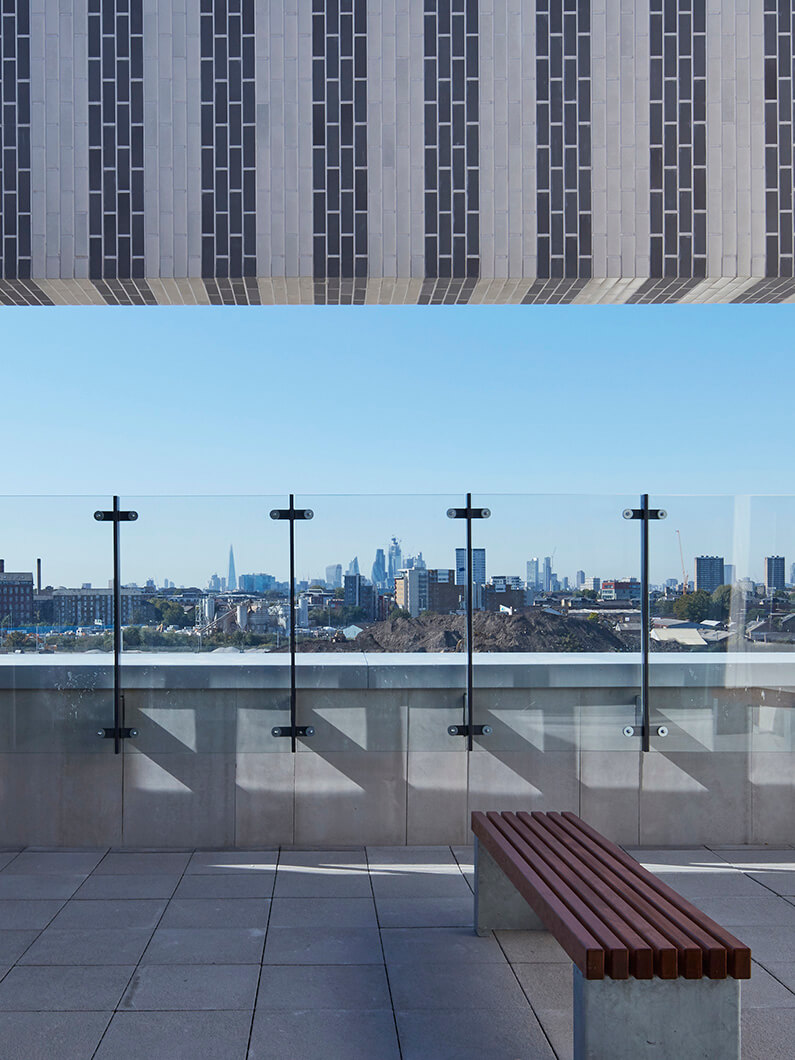
A generous internal ‘street’ forms the backbone of the school with voids punctuated on each level to connect the floors and provide light from skylights above. Different coloured floors and signage provide identity and orientation. Arranged on either side of this wide central spine are teaching spaces organised by faculty. Throughout the school, large windows maximise views of London to the south and of the Olympic Park to the north while providing plenty of daylight and a sense of openness to the teaching spaces.
The majority of teaching spaces are naturally ventilated, utilising low energy heat recovery units fixed to the windows. The flat-slab insitu frame provides thermal mass while allowing long-term adaptability, and LED lights and low-flush toilets reduce energy and water use. The heating system is linked into the Olympic Park-wide district heating network. The school has achieved a BREEAM Excellent certification.
